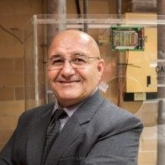Advanced Oxidation Applications II
A special issue of Environments (ISSN 2076-3298).
Deadline for manuscript submissions: closed (30 September 2022) | Viewed by 18856
Special Issue Editors
Interests: air pollution control; photocatalysis; UV disinfection; biofiltration
Special Issues, Collections and Topics in MDPI journals
Interests: photochemical reaction engineering, including photocatalysis, UV/hydrogen peroxide, fenton/photo-fenton, etc.; integration of advanced oxidation technologies and biological processes for wastewater treatment; effects of climate change on the quality and quantity of groundwater
Special Issues, Collections and Topics in MDPI journals
Special Issue Information
Dear Colleagues,
Advanced oxidation processes (AOPs) are an important class of destructive technologies for the treatment of organics in water, air, and on surfaces. Research has addressed a wide variety of approaches, including ozone, peroxides, persulfate, photolysis, photocatalysis, radiolysis, sonolysis, non-thermal plasma, electrochemical, and various combinations. In the field of photocatalysis, significant advances are being made in the improved use of the visible spectrum and new LED sources. Some AOPs have shown promise in the removal of micropollutants such as polyfluoroalkyl substances and personal care products in water. There remain many research questions to be addressed for the efficient and cost-effective application of AOPs in various situations. Such questions include the understanding and optimization of the chemistry, the development of improved catalysts, and the design and operation of better reaction systems.
For this Special Issue, we invite the submission of critical reviews and unpublished original research on any aspects of AOPs. The application of AOPs to specific environmental concerns in air, water, or other systems is of particular interest, including the integration of AOPs within other environmental control technologies.
Prof. Dr. William A. Anderson
Prof. Dr. Mehrab Mehrvar
Prof. Dr. Jason Zhang
Guest Editors
Manuscript Submission Information
Manuscripts should be submitted online at www.mdpi.com by registering and logging in to this website. Once you are registered, click here to go to the submission form. Manuscripts can be submitted until the deadline. All submissions that pass pre-check are peer-reviewed. Accepted papers will be published continuously in the journal (as soon as accepted) and will be listed together on the special issue website. Research articles, review articles as well as short communications are invited. For planned papers, a title and short abstract (about 100 words) can be sent to the Editorial Office for announcement on this website.
Submitted manuscripts should not have been published previously, nor be under consideration for publication elsewhere (except conference proceedings papers). All manuscripts are thoroughly refereed through a single-blind peer-review process. A guide for authors and other relevant information for submission of manuscripts is available on the Instructions for Authors page. Environments is an international peer-reviewed open access monthly journal published by MDPI.
Please visit the Instructions for Authors page before submitting a manuscript. The Article Processing Charge (APC) for publication in this open access journal is 1800 CHF (Swiss Francs). Submitted papers should be well formatted and use good English. Authors may use MDPI's English editing service prior to publication or during author revisions.
Keywords
- Photocatalysis, photoelectrocatalysis
- Photolysis, radiolysis, sonolysis
- Nonthermal plasma
- Persulfate
- Ozone, peroxide, Fenton’s chemistry
- UV LEDs
- Reactor design and modeling
- Micropollutants, personal care products
- Volatile organic compounds
- Novel photocatalysts







